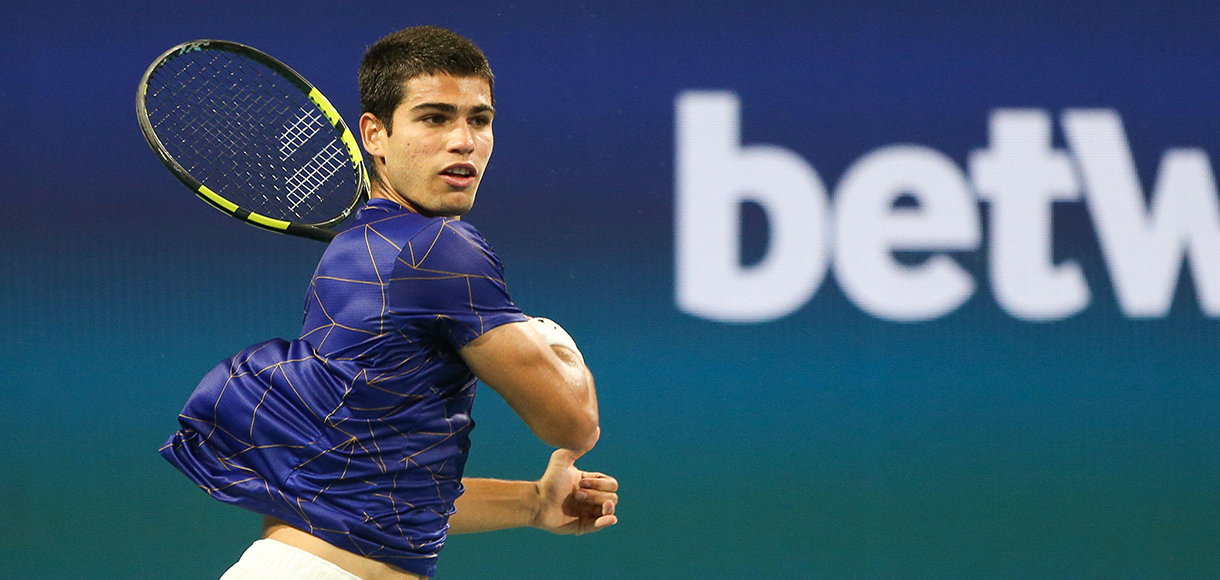What is a Walkover in Tennis?
 Source: Alamy Stock Photo
Source: Alamy Stock Photo
Federer, Nadal, Edberg: Everything you need to know about the meaning of a walkover in tennis.
What is a walkover when it comes to wagering on tennis? Betway Insider his here to explain the word’s meaning and clarify when it takes place. The walkover is commonly confused with a player’s decision to retire or default, but it most certainly is not either of those things.
To help you understand the walkover, we have included some prominent examples of it below.
What is a walkover in tennis?
Put simply, a walkover in tennis is when a player gets a “free-pass” to the next round of a tournament because their opponent could not play.
What are some common reasons for a walkover occurring?
Injuries are the most common cause of walkovers, because sometimes a given player is physically unable to compete. Illnesses fall into the same bucket, although those are slightly less common. One other reason could be a penalty or a suspension resulting from something that took place either on or off the tennis court.
According to tennis rules laid out by the ATP and WTA, these are the three “official” types of walkovers. Other tennis associations might follow similar but slightly different definitions.
What else do tennis walkovers impact?
A player granted a pathway through to the next round via a walkover is not granted a victory. They are also not granted extra prize money. The advantage should be obvious enough -- an easier route to a title. This creates less fatigue, more practice time, and potentially enables players to avoid a tricky opponent.
Additionally, walkover victories do not impact ATP/WTA rankings in terms of an being credited with an extra victory. However, players are granted ranking points for advancing to the next round. This sort of structure is similar for UEFA competitions in soccer, where “wins” and “round advancements” are placed into different categories for ranking/prize money purposes.
What does a walkover mean in tennis betting?
This is an important time to make a distinction between a retirement and a walkover. Retirement happens when a player cannot continue mid-match, meaning that all bets placed prior to the match are still in effect. Whoever retires is deemed to have lost the match, and all bets placed on that player to win are also lost, regardless of the score at the time. All moneyline bets go live once a match starts, although some sportsbooks wait until one set is completed to lock it in. Check with your book to see the rules.
On the other hand, bets for matches recorded as walkovers become void. Since the match never occurs, there can’t be a winner or loser. However, walkovers do impact futures bets. If you have a certain player to win the tournament outright and they get a walkover through to the next round, you’re in luck! That’s one less match your pick has to play.
Walkovers at U.S. Open tennis
At the 2022 U.S. Open, American John Isner withdrew from his second-round match against Danish No. 28 seed Holger Rune due to a wrist injury. As a result, Rune walked over onto a third-round matchup against Cameron Norrie, where he lost in straight sets.
What are the Most Famous Walkovers in Tennis History?
Here are a few famous walkovers found in both recent and decades-old tennis history.
- Kyrgios vs No. 2 Nadal, 2022 Wimbledon Semifinals
In 2022, Rafael Nadal had his sights set on winning three straight Grand Slam events after claiming both the Australian and French Opens earlier in the year. In surviving a thrilling, five-set quarterfinal against Taylor Fritz, the Spaniard tore his abdomen, which force him to withdraw from a semifinal match against Australian Nick Kyrgios.
Instead of having to face one of the best players of all time, Kyrgios automatically advanced to his first Grand Slam final. He would go on to lose to Novak Djokovic in four sets.
- No. 8 Federer vs. No. 9 Berrettini, 2021 French Open Round of 16
Roger Federer’s third-round match against Dominic Koepfer at the 2021 French Open lasted three hours and 34 minutes, taking too much out of the Swiss star for him to continue in the tournament.
“After two knee surgeries and over a year of rehabilitation it’s important that I listen to my body and make sure I don’t push myself too quickily on my road to recovery. I am thrilled to have gotten 3 matches under my belt. There is no greater feeling than being back on the court. See everyone soon,” he said on Twitter after deciding to withdraw from the tournament rather than play a scheduled Round of 16 match against Matteo Berrettini.
Unfortunately, Federer never made it back to the French Open.
- No. 1 Margaret Smith Court vs No. 2 Nancy Richey, 1966 Australian Open Final
Let’s jump all the way back to an era when the Australian Open was still called the Australian Championships. American Nancy Richey’s withdrawal from a scheduled championship match against reigning six-time champion Margaret Smith Court is the only final-round walkover in women’s Grand Slam history.
Richey was suffering from a knee injury.
- No. 2 Jim Courier vs. Richard Krajicek, 1992 Australian Open Semifinals
Dutchman Richard Krajicek was on a roll at the 1992 Australian Open, having already beaten Michael Chang and Michael Stich on his way to the semifinals. Krajicek was scheduled to face American Jim Courier, the world’s No. 2-ranked player, in the semifinals but had to withdraw from the match due to lingering tendinitis in his knee. Courier therefore had a walkover into the final, where he beat No. 1-ranked Stefan Edberg in four sets.
While Krajicek went on to win Wimbledon in 1996, this unfortunate situation four years earlier prematurely ended his best career performance at an Australian Open.
US Open Tennis Betting Odds at Betway
Find US Open tennis odds on the Betway sportsbook. You’ll find all the latest spreads, totals, money lines, and tip-offays. Missed tip-off? No problem, Betway also offers live betting. All your Tennis betting needs are covered at our online sportsbook.
Visit Betway’s Tennis predictions page for the best insights, analysis, and picks on parlays, props, SGP, and more.
























